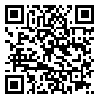Volume 17, Issue 3 (12-2019)
sjsph 2019, 17(3): 212-228 |
Back to browse issues page
Download citation:
BibTeX | RIS | EndNote | Medlars | ProCite | Reference Manager | RefWorks
Send citation to:



BibTeX | RIS | EndNote | Medlars | ProCite | Reference Manager | RefWorks
Send citation to:
Karimi N, Saadat Gharin S, Tol A, Sadeghi R, Yaseri M, Mohebbi B. Role of Health Literacy and Demographic Variables in Determining Health-Promoting Behaviors Among High School Female Students in the City of Tehran, Iran. sjsph 2019; 17 (3) :212-228
URL: http://sjsph.tums.ac.ir/article-1-5790-en.html
URL: http://sjsph.tums.ac.ir/article-1-5790-en.html
Neda Karimi1 
 , Shahrzad Saadat Gharin2
, Shahrzad Saadat Gharin2 
 , Azar Tol3
, Azar Tol3 
 , Roya Sadeghi *
, Roya Sadeghi * 
 4, Mehdi Yaseri5
4, Mehdi Yaseri5 
 , Bahram Mohebbi6
, Bahram Mohebbi6 


 , Shahrzad Saadat Gharin2
, Shahrzad Saadat Gharin2 
 , Azar Tol3
, Azar Tol3 
 , Roya Sadeghi *
, Roya Sadeghi * 
 4, Mehdi Yaseri5
4, Mehdi Yaseri5 
 , Bahram Mohebbi6
, Bahram Mohebbi6 

1- MSc. Student, Department of Health Education and Promotion, School of Public Health, Tehran University of Medical Sciences, Tehran, Iran
2- MSc. Dr. Shariati Technical Faculty, Technical and Vocational University, Tehran, Iran
3- PhD. MPH. Department of Health Education and Promotion, School of Public Health, Tehran University of Medical Sciences, Tehran, Iran
4- PhD. Associate Professor, Department of Health Education and Promotion, School of Public Health, Tehran University of Medical Sciences, Tehran, Iran ,sadeghir@tums.ac.ir
5- PhD. Associate Professor, Department of Epidemiology and Biostatistics, School of Public Health, Tehran University of Medical Sciences, Tehran, Iran
6- MD. Associate Professor, ShahidRajaei Cardiovascular, Medical and Research Center, Iran University of Medical Sciences,Tehran, Iran
2- MSc. Dr. Shariati Technical Faculty, Technical and Vocational University, Tehran, Iran
3- PhD. MPH. Department of Health Education and Promotion, School of Public Health, Tehran University of Medical Sciences, Tehran, Iran
4- PhD. Associate Professor, Department of Health Education and Promotion, School of Public Health, Tehran University of Medical Sciences, Tehran, Iran ,
5- PhD. Associate Professor, Department of Epidemiology and Biostatistics, School of Public Health, Tehran University of Medical Sciences, Tehran, Iran
6- MD. Associate Professor, ShahidRajaei Cardiovascular, Medical and Research Center, Iran University of Medical Sciences,Tehran, Iran
Abstract: (3865 Views)
Background and Aim: Since many of the healthy behaviors are adopted and develop during adolescence, proper choice of such behaviors is very important in this period of life. In addition, paying attention to the health of girls is crucial because they will transfer such behaviors to the next generation. Therefore, this study aimed to identify the role of health literacy and demographic variables in determining health-promoting behaviors among second-grade high school girl students in the City of Tehran, Iran.
Materials and Methods: This descriptive-analytic cross-sectional study was conducted on 370 female students using cluster sampling method in 2018. Data were collected using demographic, Health Literacy Measure for Adolescents (HELMA) and Health-Promoting Lifestyle Profile II (HPLPII) questionnaires and analyzed using SPSS25.
Results: The results of multivariate regression analysis revealed that there were statistically significant direct associations between health-promoting behaviors and the following variables: one’s health literacy (β= 0.39, p<0.001), interest in health topics (β= 1.35, p<0.001), reading of journals and newspapers (β=0.76, p= 0.007), father's education (p= 0.002), body mass index (p= 0.022), field of study (p<0.001), the first source of health information (p<0.001) and place of residence (p = 0.023). Further analysis of the data showed an indirect association between health-promoting behaviors and age (β= -1.69, p<0.001) and health assessment (β=-1.67, p<0.01).
Conclusion: Based on the findings it is concluded that the subjects’ health literacy and health-promoting behavior scores were “not sufficient” and “intermediate”, respectively. It is recommended to design and implement appropriate training/intervention programs aiming at increasing the heath literacy and promoting health behaviors of female students.
Materials and Methods: This descriptive-analytic cross-sectional study was conducted on 370 female students using cluster sampling method in 2018. Data were collected using demographic, Health Literacy Measure for Adolescents (HELMA) and Health-Promoting Lifestyle Profile II (HPLPII) questionnaires and analyzed using SPSS25.
Results: The results of multivariate regression analysis revealed that there were statistically significant direct associations between health-promoting behaviors and the following variables: one’s health literacy (β= 0.39, p<0.001), interest in health topics (β= 1.35, p<0.001), reading of journals and newspapers (β=0.76, p= 0.007), father's education (p= 0.002), body mass index (p= 0.022), field of study (p<0.001), the first source of health information (p<0.001) and place of residence (p = 0.023). Further analysis of the data showed an indirect association between health-promoting behaviors and age (β= -1.69, p<0.001) and health assessment (β=-1.67, p<0.01).
Conclusion: Based on the findings it is concluded that the subjects’ health literacy and health-promoting behavior scores were “not sufficient” and “intermediate”, respectively. It is recommended to design and implement appropriate training/intervention programs aiming at increasing the heath literacy and promoting health behaviors of female students.
Type of Study: Research |
Subject:
Public Health
Received: 2019/12/18 | Accepted: 2019/12/18 | Published: 2019/12/18
Received: 2019/12/18 | Accepted: 2019/12/18 | Published: 2019/12/18
Send email to the article author
| Rights and permissions | |
 |
This work is licensed under a Creative Commons Attribution-NonCommercial 4.0 International License. |



